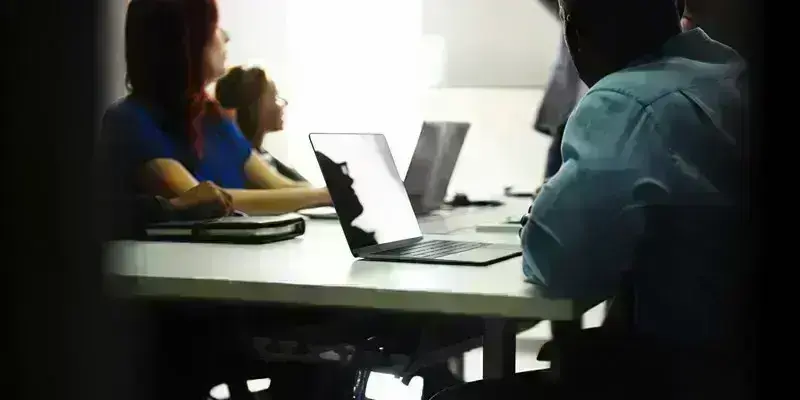
What is an agile retrospective and why do you need it?
Agile retrospectives, led by a Scrum Master, review sprints to address issues, improve processes, and enhance teamwork in software development.
According to PWC’s 20th CEO Survey. , almost a quarter of CEOs singled out innovation as their top priority for 2017. I asked our Project Manager Paul Klich for his opinion.
Can focusing on innovation itself make you succeed?
Possibly, but there is a thing that can help and it’s called collaboration, especially when it comes to working on a new software with your development team. Success is all about the relations between the team members. If you’re not paying enough attention to the spirit, it may not only have a negative impact on your work as an individual but also cause damage to the whole project.
Is there a method that can improve collaboration?
That would definitely be the agile methodology. You plan everything based on the needs of your team and the requirements of the project. You organise the Scrum Sprints that keep your team motivated and informed and then there’s the retrospective meeting.
Why do you need that retrospective meeting?
Working with agile methodology makes it clear for all of the team members what you should do. You have one retrospective meeting for each Scrum Sprint to help you solve any problems. It should not, however, have a negative impact on team cooperation, it’s only a part of the whole process of software development.
Who arranges the meeting?
A scrum master, of course. If there isn’t one in the team, it’s usually a project manager who serves as both product owner and scrum master in smaller and mixed projects. They’ve got the knowledge and experience to arrange and successfully conduct a retrospective. They should work as moderators who help the team members find a good way to communicate. Sometimes, the team can ask the scrum master to organise the meeting, not the other way around.
What do you need to arrange a retrospective?
Not much, all you need is a space where you can all have some privacy, a spare room preferably. You don’t even need chairs to sit on, but a white board or some pieces of paper to write or draw on can always be useful. You also need some time. The Scrum Sprint shouldn’t usually last longer than four weeks and the retrospective itself takes around three hours, but not necessarily.
Finally, what does the meeting look like?
It’s not always pleasant, considering the fact that you’re supposed to discuss problems related to the project you’re working on. It’s a good idea to mention all the things that work and that you’re proud of, but you should most definitely focus on the problems and prioritising them based on what you and the rest of the team need. As long as you’re talking about problems, discussing solutions is always welcomed. A moderator would be responsible for finding new ways that can improve and simplify the working process of the entire team.
Before the meeting starts
It’s necessary for a scrum master or project manager to plan it and prepare some kind of scenario. You should definitely remember about:
Setting the stage – each person says a few words about how they’re feeling working on a new project, whether everything is okay and if not – what is the problem; it’s also the point when you should all discuss the results from the last retrospective,
Gathering data – it’s important that every team member discusses the good and bad sides of the project and the process of working on it,
Generating insights – once you have all expressed your feelings, you should find what they’ve got in common, where they’re coming from and how they’re influencing your work,
Deciding what to do – the whole team tries to find a solution and decide who should take care of what and when,
Closing – summing up the meeting is always a great idea, each of the team members should provide the moderator with their own personal view of the retrospective.
What can you do to make the team engage and cooperate?
You should definitely set an example yourself, show the team you’re engaged and that you’re supporting each and every one of them and they will feel engaged as well. There’s a lot of things you can do to improve the flow of the meeting and one of them is definitely painting on the board.
Is there anything you should avoid during a retrospective?
The hardest thing for everyone is to open up. Discussing the problems is never comfortable, but it gets easier and easier with every meeting. You’ve got to make the team feel comfortable and remember to discuss all the issues.
To sum up, why do you need retrospective meetings?
They serve as some kind of catharsis. The team analyses issues they’re facing and what makes them feel safe and supported. You as a project manager or scrum master have a better view on both the project and the way your team works. Obviously, each team is different and you should always look for what works best for you. That’s exactly what a retrospective meeting can help you with.

Contact us.
If you need a partner in software development, we're here to help you.
We will respond to your enquiry immediately.